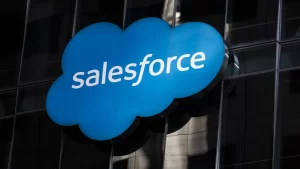In today’s fast-paced and ever-evolving business landscape, staying at the forefront of technology is crucial for B2B companies. Adapting your B2B branding strategy to emerging technologies can be the key to maintaining a competitive edge and ensuring long-term success. In this blog, we explore how B2B businesses can stay ahead of the curve by aligning their branding efforts with emerging technologies, ultimately driving better customer engagement, increasing brand visibility, and securing a competitive edge.
The Importance of Adapting B2B Branding Strategy to Technological Changes
Adapting your B2B branding strategy to technological changes is important for several reasons. Firstly, it allows you to meet the evolving needs and expectations of your target audience. As technology continues to advance, consumers and businesses alike are demanding more convenience, efficiency, and personalized experiences. By embracing emerging technologies, you can provide innovative solutions that meet these demands and stand out from your competitors.

Secondly, adapting your B2B branding strategy to technological changes can help you stay ahead of the curve. By being early adopters of new technologies, you can position your brand as a leader in your industry, showcasing your commitment to innovation and forward-thinking. This can enhance your brand reputation and attract new customers who value businesses that are willing to embrace change.
How to Identify and Choose Suitable Technologies for Your B2B Branding

Choosing the right technologies for your B2B branding strategy is crucial for staying competitive and effectively reaching your target audience. Here’s a step-by-step guide on how to identify and select suitable technologies for your B2B branding strategy.
# Understand Your Branding Goals
Begin by clearly defining your B2B branding objectives. What do you want to achieve with your branding efforts? Whether it’s increased brand visibility, improved customer engagement, or enhanced brand reputation, your goals will guide your technology choices.
# Know Your Target Audience

Understand your B2B audience’s preferences and behaviors. Are they tech-savvy, and where do they spend their time online? This information will help you select technologies that align with your audience’s habits and preferences.
# Identify Technological Trends
Stay updated on technological trends that are relevant to your industry and B2B branding. Consider emerging technologies like AI, data analytics, mobile optimization, and blockchain, as well as trends in content marketing, social media, and user experience.
# Assess Your Resources
Assess your budget, time, and personnel resources. Some technologies may require significant investments, while others may be more cost-effective. Ensure that your technology choices align with your available resources.
# Seek Expert Advice

Consult with experts or technology specialists who can provide insights into the best tools and platforms for your B2B branding needs. They can help you understand the potential impact of each technology on your branding strategy.
# Test and Experiment
Before making a total commitment, consider testing and experimenting with different technologies. Run pilot programs or trials to see how they work in your specific B2B context. This helps you understand their practical implications and benefits.
# Consider Integration
Consider how the chosen technologies will integrate with your existing systems and processes. A seamless integration is essential to avoid disruptions and ensure the efficient use of these tools.
# Measure ROI and Performance
Establish key performance indicators (KPIs) to measure the return on investment (ROI) and performance of each technology. This data-driven approach will help you make informed decisions about which technologies are working best for your B2B branding strategy.
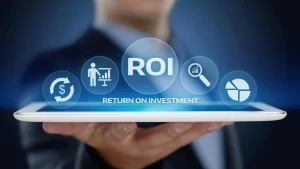
# Stay Adaptable
Technology evolves rapidly, so be prepared to adapt and grow with it. Continuously monitor the performance of your chosen technologies and be open to integrating new ones as they become relevant and beneficial.
# Seek Feedback
Feedback should be gathered from your target audience, customers, and team members. They can provide valuable insights into the effectiveness of the technologies in enhancing your B2B branding efforts.
Implementing New Technologies in Your B2B Branding Strategies
In the rapidly evolving world of B2B marketing, integrating new technologies into your branding strategies is more than just an option—it’s a strategic necessity. But how do you go about implementing these technologies effectively?
1. Harness the Power of Data Analytics

Data analytics is a game-changer for B2B branding. With special tools, B2B companies can understand how customers behave and what’s happening in the market. Using this data, you can make your branding more personal, create content that matters to your audience, and adjust your messages to fit what your customers want. This personal touch makes your B2B branding work even better.
2. Embrace Artificial Intelligence (AI)
AI technologies, such as chatbots and virtual assistants, have changed how businesses talk to their customers. These smart computer systems let B2B companies give individualized help to lots of people. This makes customers like the brand more, and it helps the brand look good. When you use AI in your branding plan, you can give custom content and ideas, positioning your brand as a trusted advisor and industry leader.
3. Augmented and Virtual Reality (AR/VR) for Enhanced Product Visualization
The integration of AR and VR technologies can bring your B2B branding strategy to life. These immersive technologies offer the potential to showcase products and services more engagingly and interactively. For example, you can create virtual tours of your facilities, or allow potential clients to experience your products in a virtual environment. This not only enhances brand engagement but also sets your brand apart as an innovator in the B2B space.
4. Mobile Optimization
As B2B professionals become increasingly mobile, it’s crucial to ensure that your branding strategy is optimized for mobile devices. It includes responsive web design, mobile apps, and mobile advertising. A seamless mobile experience reflects positively on your brand and ensures accessibility for your target audience.
5. Blockchain for Trust and Transparency
Blockchain technology is revolutionizing trust and transparency in B2B transactions. By integrating blockchain into your branding strategies, you can assure clients of the authenticity and security of your offerings. This not only builds trust but also positions your brand as a reliable partner in the marketplace.
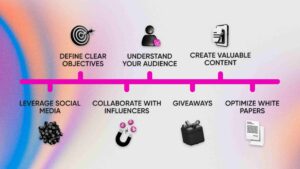
6. Sustainability and Green Technologies
Sustainability is a growing concern in the B2B world. By implementing green technologies and sustainable practices in your operations and branding, you can demonstrate your commitment to environmental responsibility. This resonates with environmentally conscious clients and enhances your brand’s reputation.
7. Automation and Efficiency
Automation technologies can streamline your branding efforts. Implementing marketing automation tools can help you manage and execute campaigns more efficiently, saving time and resources. This can free up your team to focus on creative and strategic aspects of branding.
8. Monitoring and Adaptation
Continuous monitoring of the technology landscape is crucial. New technologies are constantly emerging, and staying current is essential for successful implementation. Regularly assess the impact of the technologies you’ve incorporated into your branding strategies and be prepared to adapt as necessary.
9. Influencer Marketing on Digital Platforms
Social media and digital platforms have transformed the way B2B companies connect with their target audience. Partnering with relevant influencers in your industry helps establish your brand as an authority and opens doors to new and diverse audiences, enhancing brand visibility and trust.
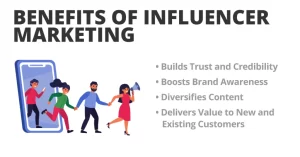
10. Video Marketing and Live Streaming
Video marketing has become a powerful tool for B2B branding strategies, effectively conveying complex messages in a visually impactful manner. Live streaming events, conferences, or webinars can foster real-time engagement, allowing you to establish meaningful connections with potential clients and showcase your expertise.
Real-life Examples of Successful Adaptations of Emerging Technologies in B2B Branding
Here are some real-life examples of successful adaptations of emerging technologies in B2B branding. These examples demonstrate how prominent B2B brands have successfully adapted emerging technologies like AI, AR, blockchain, and IoT to enhance their branding efforts. By doing so, they have improved customer experiences, simplified their processes, and reinforced their positions as leaders in their respective industries.
- IBM Watson: IBM has integrated Watson, its artificial intelligence system, into its B2B branding strategy. Watson analyzes large datasets to provide insights and personalized recommendations to customers.
- Salesforce Einstein: Salesforce, a B2B CRM provider, has incorporated its AI tool, Einstein, into its branding strategy. Einstein uses machine learning to help sales and marketing teams make data-driven decisions, predict customer behavior, and personalize interactions.

- Siemens: Siemens, a big tech company, uses augmented reality (AR) to make their B2B brand better. They have AR apps that let customers see and understand how Siemens machines work and help their businesses. This use of AR has made people like Siemens more and understand their products better.
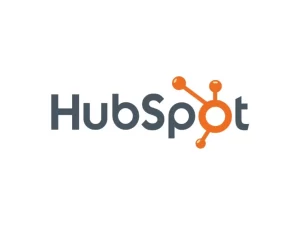
- HubSpot: HubSpot, a B2B inbound marketing platform, has integrated chatbots and AI-driven tools into its platform. These technologies help users with lead generation, content recommendations, and personalized user experiences.
- Adobe: Adobe, a well-known B2B software company, has integrated AI into its creative tools, making design and content creation more efficient and personalized. Adobe Sensei, their AI platform, improves productivity and helps users create more engaging content.
- SAP: SAP, a leading enterprise software provider, has adopted blockchain technology for supply chain management. This innovation has enhanced transparency, and security in the supply chain, contributing to SAP’s reputation as a trusted and forward-thinking brand in the B2B sector.
Measuring the Effectiveness of Your Adapted B2B Branding Strategy
Measuring the success of your adjusted B2B branding strategy is crucial to ensuring that it’s delivering the desired results. Here are some key steps to help you evaluate the effectiveness of an adapted B2B branding strategy.
I. Set Clear Objectives
Before you can measure success, you need to define what success means for your branding strategy. Establish clear, specific, and measurable goals. These could be related to increased brand awareness, customer engagement, lead generation, or sales.
II. Track Website Analytics
Utilize web analytics tools like Google Analytics to monitor website traffic, user behavior, and conversion rates. Look for changes in important measurements, such as the number of visitors, bounce rate, and the time visitors spend on your site.
III.Monitor Social Media Statistics

Social media platforms provide insights into your brand’s performance. Engage with your audience by monitoring likes, shares, comments, and click-through rates. The growth of your social media following can also be an indicator of brand success.
IV.Survey Customer Feedback
Collect customer feedback through surveys and feedback forms to gauge their perception of your brand. Ask about brand recognition, satisfaction, and whether they find your branding efforts appealing and informative.

V.Track Lead Generation
Measure the quantity and quality of leads generated through your branding efforts. Determine the source of leads and whether they convert into paying customers.
VI. Assess Customer Loyalty
Keep an eye on how many customers stay with you over time and how valuable they are in the long run. A good B2B branding strategy should make customers stick around and do business with you again.
VII. Compare Before and After Data
Compare key statistics from before you implemented your B2B branding strategy with the data you collected after its implementation. Look for positive trends and improvements.
VIII. Evaluate Content Performance
Analyze the performance of your content marketing efforts. Track the reach, engagement, and conversion rates of your content pieces, including blog posts, videos, and whitepapers.
IX. ROI Analysis
Calculate the return on investment (ROI) of your branding strategy by comparing the costs of implementation with the revenue or other benefits it has generated.
X. Competitive Analysis
Benchmark your brand against competitors to see how you stack up. Compare metrics like market share, customer satisfaction, and brand recognition.
XI. Brand Surveys and Studies
Conduct brand awareness and perception surveys to understand how your brand is perceived in the market. Brand studies can provide valuable insights into your brand’s health and reputation.
XII. Focus Groups and Interviews
Talk to your customers and partners by using focus groups and interviews to understand what they think about your brand. This gives you valuable insights into how people see your brand.
XIII. Net Promoter Score (NPS)
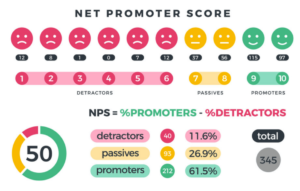
You can determine the loyalty of your customers and their willingness to recommend your brand to others by using NPS surveys.
XIV. A/B Testing
Implement A/B tests to compare different B2B branding strategies and determine which one is more effective based on the metrics you’re tracking.
XV. Review Sales Data
Evaluate changes in sales data, such as order volume, revenue, and customer acquisition rates, to assess the impact of your B2B branding strategy on the bottom line.
CONCLUSION
In today’s fast-paced business world, B2B companies need to adapt their branding strategies to keep up with technological advancements. As we have explored in this blog post, embracing emerging technologies in your B2B branding strategy can lead to numerous benefits, such as meeting the evolving needs and expectations of your target audience, staying ahead of the competition, and improving internal operations and efficiency. Embrace technological changes as an opportunity for growth, and your B2B brand will reap the rewards.


